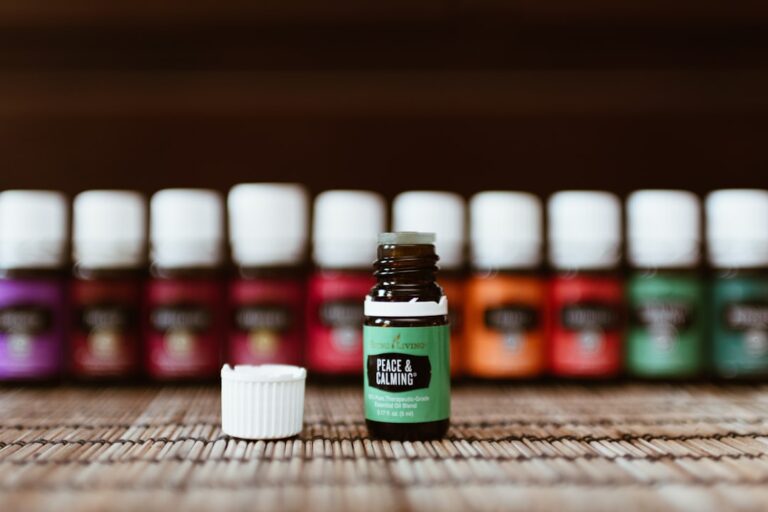DIY Natural Deodorant: A Step-by-Step Guide

Natural deodorant has become increasingly popular as consumers seek alternatives to conventional products containing potentially harmful chemicals. Many commercial deodorants include ingredients such as aluminum compounds, parabens, and phthalates, which have been the subject of health concerns. Some studies have suggested possible links between these chemicals and various health issues, though more research is needed to establish definitive connections.
DIY natural deodorant offers an alternative approach to personal hygiene, utilizing ingredients that are generally considered safe for topical use. These homemade products typically contain natural antimicrobial and moisture-absorbing substances, such as baking soda, arrowroot powder, and essential oils. Creating natural deodorant at home can potentially reduce environmental impact by minimizing plastic packaging waste associated with commercial products.
However, it’s important to note that the effectiveness of natural deodorants may vary among individuals, and some people may experience skin sensitivities to certain natural ingredients. This article will examine the potential benefits of natural deodorants, provide a list of common ingredients used in DIY formulations, offer a step-by-step guide for making natural deodorant at home, discuss storage and usage recommendations, address potential challenges, and consider the practicality of incorporating homemade natural deodorant into daily personal care routines.
Key Takeaways
- DIY natural deodorant is a healthier alternative to commercial deodorants, as it is free from harmful chemicals and toxins.
- Using natural deodorant can help reduce the risk of skin irritation and allergic reactions, as well as promote overall skin health.
- Common ingredients for DIY natural deodorant include coconut oil, shea butter, baking soda, arrowroot powder, and essential oils.
- Making natural deodorant at home is simple and cost-effective, requiring only a few basic ingredients and minimal time.
- Storing DIY natural deodorant in a cool, dry place and applying it with clean hands can help maintain its effectiveness and prevent contamination.
Benefits of Using Natural Deodorant
Healthier Ingredients
Natural deodorants are free from harmful chemicals such as aluminum, parabens, and phthalates, which have been linked to health issues like breast cancer and hormone disruption. By using natural deodorant, you can avoid exposing your body to these potentially harmful substances.
Effective and Customizable
Natural deodorants are often made with ingredients that have antibacterial properties, such as coconut oil and baking soda, which can help to neutralize odor-causing bacteria without disrupting the body’s natural processes. Furthermore, DIY natural deodorant is customizable, allowing you to tailor the scent and strength to your personal preferences.
A Sustainable Choice
Making your own natural deodorant is more sustainable and environmentally friendly than purchasing commercial options, as it reduces the amount of plastic packaging and waste produced.
Overall, using natural deodorant is a healthier, more customizable, and more sustainable choice for both your body and the environment.
Ingredients for DIY Natural Deodorant

Making your own natural deodorant requires just a few simple ingredients that are easy to find and often already in your pantry. The base of most DIY natural deodorants is coconut oil, which has natural antibacterial properties and helps to moisturize the skin. Baking soda is another key ingredient, as it helps to neutralize odor-causing bacteria.
Arrowroot powder or cornstarch can be added to help absorb moisture and create a smoother texture. Essential oils are used to add fragrance and additional antibacterial properties. Some popular choices include lavender, tea tree, and peppermint.
Beeswax or shea butter can also be added to help solidify the deodorant and provide additional moisturizing benefits. These simple and natural ingredients work together to create an effective and customizable deodorant that is free from harmful chemicals.
Step-by-Step Guide to Making Natural Deodorant
| Ingredients | Quantity |
|---|---|
| Cocoa butter | 2 tbsp |
| Coconut oil | 2 tbsp |
| Baking soda | 3 tbsp |
| Cornstarch | 3 tbsp |
| Essential oil (optional) | 10 drops |
| Beeswax (optional) | 1 tbsp |
Making your own natural deodorant is a simple and rewarding process. To start, gather the necessary ingredients: coconut oil, baking soda, arrowroot powder or cornstarch, essential oils, and beeswax or shea butter. In a double boiler or microwave-safe bowl, melt 1/4 cup of coconut oil and 2 tablespoons of beeswax or shea butter together until fully melted.
Once melted, remove from heat and stir in 1/4 cup of baking soda and 1/4 cup of arrowroot powder or cornstarch until well combined. Add 10-20 drops of your chosen essential oils for fragrance and additional antibacterial properties. Pour the mixture into a clean, empty deodorant container or a small glass jar for a more eco-friendly option.
Allow the deodorant to cool and solidify before use. Once solidified, your DIY natural deodorant is ready to use!
Tips for Storing and Using DIY Natural Deodorant
Storing and using DIY natural deodorant is simple, but there are a few tips to keep in mind for best results. Store your homemade deodorant in a cool, dry place to prevent it from melting or becoming too soft. If using a glass jar, simply scoop out a small amount with clean fingers and apply it to your underarms.
If using a deodorant container, apply the deodorant by swiping it onto clean underarms. It’s important to note that because DIY natural deodorants do not contain antiperspirant ingredients, you may still experience some wetness. However, the antibacterial properties of the ingredients will help to neutralize odor-causing bacteria throughout the day.
If you have sensitive skin, consider doing a patch test before applying the deodorant to ensure that you do not have any adverse reactions. With these simple tips in mind, you can easily incorporate DIY natural deodorant into your daily routine.
Potential Pitfalls and How to Avoid Them

Skin Irritation from Baking Soda
Some people may experience skin irritation from the baking soda in natural deodorants. If this occurs, try reducing the amount of baking soda in the recipe or using arrowroot powder or cornstarch as an alternative.
Skin Sensitivity from Essential Oils
Additionally, essential oils can cause skin sensitivity in some individuals, so it’s important to do a patch test before using the deodorant on a larger area.
Managing Wetness
It’s also important to note that because DIY natural deodorants do not contain antiperspirant ingredients, you may still experience some wetness throughout the day. However, with regular use, many people find that their bodies adjust and produce less sweat over time.
Enjoying the Benefits of DIY Natural Deodorant
By being mindful of these potential pitfalls and making adjustments as needed, you can enjoy the benefits of DIY natural deodorant without any issues.
Conclusion and Final Thoughts on DIY Natural Deodorant
In conclusion, DIY natural deodorant offers a safe, effective, and customizable alternative to commercial options that are often filled with harmful chemicals. By using simple and natural ingredients such as coconut oil, baking soda, arrowroot powder or cornstarch, essential oils, and beeswax or shea butter, you can create a personalized deodorant that works for your body’s needs. Storing and using DIY natural deodorant is easy with a few simple tips in mind, and by being aware of potential pitfalls such as skin irritation or increased wetness initially, you can avoid any issues that may arise.
Overall, making your own natural deodorant is a rewarding and empowering process that allows you to take control of what you put on your body while reducing your environmental impact. With its numerous benefits and simple process, DIY natural deodorant is a great addition to any natural living routine.
If you’re interested in more life hacks and natural solutions, check out this article on The Top 15 Life Hacks for Solving Everyday Problems. It’s filled with practical tips and tricks for making your daily life easier and more efficient.
FAQs
What are the benefits of making your own natural deodorant?
Making your own natural deodorant allows you to control the ingredients and avoid potentially harmful chemicals found in commercial deodorants. It can also be cost-effective and environmentally friendly.
What are the common ingredients used in natural deodorant?
Common ingredients used in natural deodorant include coconut oil, shea butter, baking soda, arrowroot powder, essential oils, and beeswax. These ingredients are known for their natural odor-fighting and skin-soothing properties.
How do you make your own natural deodorant?
To make your own natural deodorant, you can mix together ingredients such as coconut oil, shea butter, baking soda, arrowroot powder, and essential oils. The mixture can then be poured into a container and allowed to solidify before use.
Are there any potential side effects of using natural deodorant?
Some people may experience skin irritation or allergic reactions to certain ingredients in natural deodorants, such as baking soda or essential oils. It’s important to do a patch test before using a new natural deodorant.
How effective is natural deodorant compared to commercial deodorant?
The effectiveness of natural deodorant can vary from person to person. While some may find it just as effective as commercial deodorant, others may need to reapply it more frequently. It’s important to find the right formula that works for your body.





